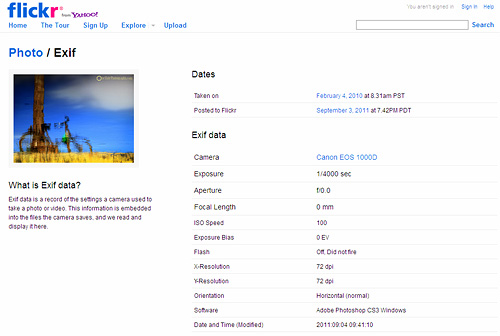
When starting to get acquainted with the world of digital photography, you will sooner or later hear of this EXIF term. It may be from the camera manual, heard it in a conversation among photographers, or when reading a thread in a photography forum only.
So what exactly is EXIF metadata?
Basically, metadata is a term from the world of information technology (IT), which roughly means the data that records important information of a file. While the EXIF metadata itself is a metadata especially used in the world of digital photography. EXIF records plenty of detailed information of a digital photograph file. EXIF stands for Exchangeable Image Format.
By viewing the EXIF data of a photograph, we can at the very least discover the following information:
– Time and date of the photo’s recording.
– The brand and type of camera used.
– The type of lens used.
– The focal length used.
– Exposure data, such as the shutter speed, aperture, and ISO. Also, whether or not flash was used.
– And if the camera is equipped with GPS coordinates, the EXIF records the exact position where the photo was taken.
There are actually plenty more information recording in the EXIF data, but at least the basics are covered.
How can I view the EXIF data of a photograph?
If you want to view the EXIF data of a photograph, open the photograph in a computer, then:
– If you are in windows explorer, right click the photograph and then click properties.
– If in a Mac Finder, right click and then click on more info.
– You can also view the EXIF data via photo-viewing software such as ACDsee and click on properties.
Why would I need to know the EXIF data of my photograph?
Viewing the EXIF data of a photograph has many uses, some of which are:
– We can compare two photos taken using different settings. Then, we can analyze the difference in results to discover the better-suited settings for certain photographing conditions.
– We can learn from works of other photographers. For instance, when visiting a photo-sharing website such as Flickr.com and you stumble upon a great photo and would like to know how the photo was taken, you can view its EXIF data as such:

Go on, give it a try. Examine, learn, execute!
















